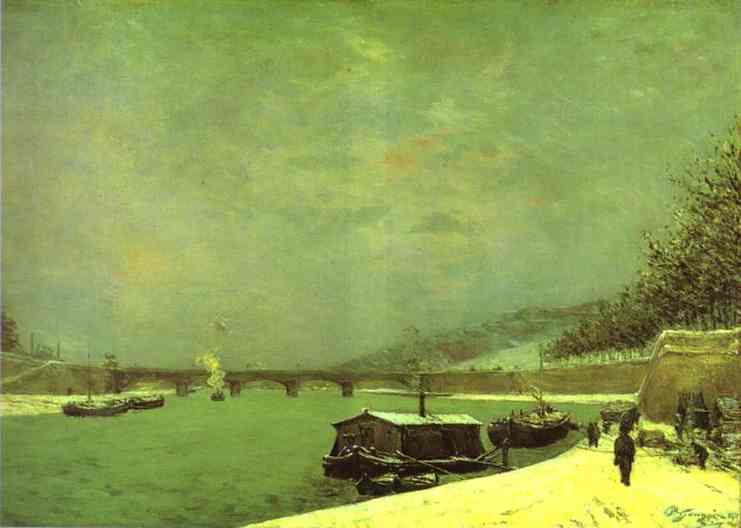Descrizione
Paul Gauguin's The Seine at the Pont d'Iéna, painted in 1875, is a fascinating example of his early work and his search for a distinctive style within the context of Impressionism. What is presented in this work is an idyllic landscape that captures the serenity and dynamism of the Paris cityscape in a time of change and innovation. While it is impossible to ignore the influence of his contemporaries, it is through Gauguin's personal lens that we gain a sense of awe and wonder at the nature surrounding the iconic bridge over the Seine.
The composition of the painting is a dialogue between water and sky, where the blue hue of the Seine acts as a mirror reflecting the clouds and the soft green of the surrounding vegetation, creating an almost ethereal effect. This fusion of colours not only adds depth to the work but also establishes a bohemian atmosphere, typical of a Paris that was experiencing an intellectual and artistic effervescence. The Pont d'Iéna stands as a symbol of the connection, both physical and spiritual, between the city and its inhabitants; however, there are no alert figures in the foreground, suggesting a narrative of contemplation and solitude, rather than interaction.
Color is another fundamental aspect in this work. Gauguin employs a vibrant color palette that reinforces the sense of light and movement. The greens and blues of the painting, accented by yellows and earthy tones, suggest not only daylight, but also the passage of time in the experience of the landscape. The brushwork is loose and expressive, allowing light and color to merge, characteristics that would later be emphasized in his post-impressionist work. In this way, "The Seine at the Pont d'Iéna" is presented as a transitional work, in which Gauguin begins to distance himself from strictly naturalistic representation towards a more subjective and emotional interpretation of the landscape.
Although the work echoes the Impressionist movement, where the direct representation of the subject and the capture of the moment are paramount, what is interesting about this work is its ability to suggest a sense of place and an emotional connection that goes beyond mere visual representation. At its core, the work seems to speak about the human being's search for his place in the world, a recurring theme in Gauguin's career, who would seek to express the subjectivity of the human experience through color and form.
As one considers the relevance of The Seine at the Pont d'Iéna in the context of Gauguin's oeuvre, it is impossible not to mention his evolution towards symbolism and the use of colour as an emotional language in his later works, particularly in his famous explorations of Polynesia. This early work lays not only the foundations of his career, but also serves as a reminder of the constant flux between light and shadow, the tangible and the intangible, becoming a fundamental brick in the building of his recognisable and unique style. Here, Gauguin sets forth a visual reflection that will endure throughout his career, a testament to his ability to see the world not only with his eyes, but also with his heart.
KUADROS ©, a famous painting on your wall.
Hand-made oil painting reproductions, with the quality of professional artists and the distinctive seal of KUADROS ©.
Painting reproduction service with satisfaction guarantee. If you are not completely satisfied with the replica of your painting, we will refund 100% of your money.

